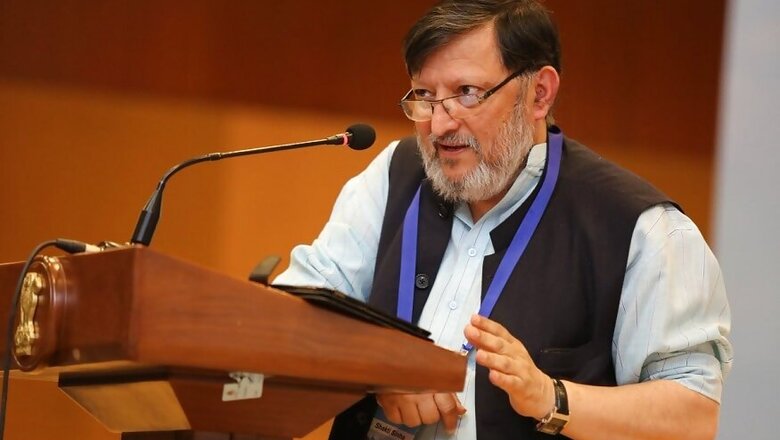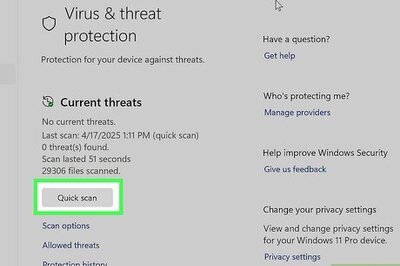India an Obstacle to China's 2049 Master Plan, Says ex-Vajpayee Aide Shakti Sinha on Border Tensions

views
India lost 20 soldiers in Galwan Valley border clash with China on June 15. Prime Minister Narendra Modi in an all-party meet on Friday said that neither has anyone entered Indian territory, nor is anyone present in Indian territory currently, and nor is any Indian post captured.
But what lies ahead for India as its neighbours – Nepal and China – turn hostile? Shakti Sinha, former NMML director and current director of Atal Bihari Vajpayee Institute of Policy Research and International Studies, MS University, Vadodara, speaks to News 18 about the challenges ahead for India, Chinese Premier’s foreign policy of ‘China should not hide its strength’ and why it has decided to change the status quo.
India-China border dispute goes back to 1914 and there have been major military conflicts and incidents like Doklam 2017 since then. But it is for the first time that India lost 20 soldiers. How do you see the developments on the border with China?
China has, over the past decade, become more aggressive. It feels the time has come for it to assert its position in the world and emerge as the new hegemon. Xi Jinping’s China Dream is clear: By 2049, when China celebrates the centenary of the People’s Republic, China would ‘fully developed, rich and powerful.’ It wants to become the greatest player in history. India represents an obstacle for various reasons. We were the first to sound the alarm on Belt and Road Initiative (BRI; a vast project aimed at creating a new Chinese world order) and refused to embrace this effort to create a Sinocentric world order.
India’s robust democracy, its relentless march forward, despite occasional hiccups, and our demography is a challenge to such dreams. Lastly, with our more vigorous defence of our borders, especially the development of infrastructure, meant that China felt that its ability to change the facts on the ground, was getting limited. Specifically, with the completion and the upgradation of the Darbuk-Shyok-Daulat Beg Oldi (DBO) road, Indian army would be in a striking position vis-à-vis the Karakoram Pass, and to China’s access to Occupied Ladakh and on to Pakistan. Hence, the aggressive action by China at this time and location.
The Line of Actual Control (LAC), which is a de facto border, is not delineated. Both sides interpret the boundary as per their interpretation. Do you think the dispute threatens to recur because of it?
Both sides are clear where the LAC is; this defines their patrolling limits historically. There is a well-defined protocol in what you do when you run into the other side during your patrols. This is called the banner drill. However, China has refused to share its perception of the LAC because that would constrict its salami-slicing approach of grabbing territory to give itself control of strategic position, for example, Galwan Valley. If there was no understanding about the LAC, then how come such incursions were far less and far easier to resolve in the past? The ground reality is the same, it is just that China has decided to change the status quo.
China has claimed the Galwan Valley. How do you see the foreign policy of China under Xi Zinping? How is his approach different from the past premiers?
China is going wrong because it thinks its objectives of changing facts on the ground would go unchallenged, just the way that it was allowed to create islands in the South China seas and militarise them. There is no way India would not assert its right to defend its territory. China’s strategy has been the same since 1950 – keep India down and prevent its rise. The tactics have changed. Leave aside 1962, our army gave them a bloody nose in 1967. The PLA has been in no position to assert itself. Deng’s dictum of ‘lying low’ is misunderstood. His full position was that China should ‘hide its strength and bide its time.’ Xi now feels that the time has come for China and that it should not hide its strength.
How should India respond to the dispute raging on the border right now?
By continuing the dialogue, briefing our partners, that is, those who see the Chinese game plan as dangerous to peace and stability, and be prepared to raise the temperature if the need arises. You must never decide your course of action in a hurry and you must never be predictable.
China claimed the Galwan Valley and there is denial by PM Modi on intrusion.
Let us wait for the official version of the discussion and what the PM said. As I said, we need to know the full sequence of events and facts before coming to conclusions. And yes, I cannot see India sit back and let China's attempt to change the status quo succeed. Doklam was proof of our resolve, patience and reliance on peaceful means to sort out aggressive intentions.
The upper reaches of the Galwan Valley were always with the Chinese. Their claim that all of Galwan is theirs is untenable. The LAC runs further east of PP 14 where the flag meetings of the two armies take place. These remain in Indian control. In sum, what I can conclude from the various statements, including that of PM Modi, is that we have retained control of the areas that are on our side of the LAC. The army has not allowed ingress by the PLA with our men laying down their lives defending the Indian territory. Their bravery should inspire us all.
The kind of nationalist narrative that dominates a skirmish with Pakistan is not present in India-China dispute. Do you think the central government’s response to Abhinandan Varthaman’s release was very different from the alleged capture and release of Indian soldiers in dispute with China?
If you look at reactions across the country, the mood is one of anger and a desire for self-respect. The two countries and the challenges and threats they pose are different, so our approach must be different. Plus, we do not have full facts about what happened. There’s a lot of disinformation going on, including using persons unwittingly. This is especially so about China’s intentions, its actions, etc. Best to wait before reacting.
What is the way forward for the Indian government in undertaking the strategic roads projects? Where do we see our development works and strategic concerns?
I mentioned the Darbuk-Shyok-DBO road, over 255 km in length that suddenly exposes China’s underbelly. There was the reactivation of the landing strip at DBO. In fact, from Ladakh all the way to Arunachal, we are strengthening our border infrastructure and army preparedness so that we can move our troops and equipment relatively quickly. This includes better roads, accommodation, landing strips, raising of Mountain division, acquisition of air assets etc. This is checkmating China’s aggressive designs.
Nepal’s Parliament has approved three Indian territories. How did we come to this pass? Also, how do you see China role’s in India’s friend turning hostile?
Nepal has declared the territories as theirs but the facts do not support their claims. Our Pithoragarh records show these areas are India. Our 1954 Panchseel Agreement with China mentions Lipu Lekh as point for border trade, Nepal’s 1961 Trade agreement with China does not mention Lipu Lekh but the next pass (Tinkar) in the east, our Mansarovar Yatra which resumed in 1981 has always used this route. It is Nepal which should tell us why it chose to take this controversial and yet meaningless step now. Do they really think first changing the Constitution is the best way to begin negotiations? There’s a legal dictum – men may lie but not circumstances.
In your last interview to News18 you had said economics and trade with China cannot be divorced from politics. After the current dispute, there are calls for boycotting Chinese products but is that the solution? How do we see future trade ties with China?
A blanket boycott may not be feasible or even required, but there are other ways to deal with it. In trade disputes, treat China as a non-market economy that so dumping can be determined more easily. Set your standards with adequate safeguards so that China would have to manufacture products for sale in India taking care to meet our sensitivities. Insist on data localisation with the proviso that only if India’s regulators are satisfied with other countries standards, these alone would get waivers. That the overwhelming number of cellphones sold in India has critical Chinese components is a cause of worry. Work with your industry — manufacturers of API, for example, – so that they can grow. There are a whole range of options out there.
With hostilities on three sides — Pakistan, Nepal and China — what kind of policy does India need to formulate with regards to its neighbours?
China is the only strategic challenger and the other two neighbours cannot be treated similarly. Pakistan has always been China’s understudy, solely engaged with irritating India so that we get bogged down in regional issues. Nepal is a passing phenomenon. A few years ago people talked about Maldives similarly but that has changed.
In our fight with China, who are our true friends? How much can India rely on the USA?
We are not looking for fights or for building alliances. Having said that, India is not the only country that finds the rise of China to be anything but peaceful. The USA, Japan, Australia, Singapore, Vietnam, South Korea and even Indonesia are uneasy, but we all want a peaceful way to sort out differences. Actually, even in Philippines, there is a massive resentment towards China. There are enough voices in Europe that are slowly expressing their unease.
Having said that, we do share a lot of common values and interests with the US and we have been moving towards greater sharing of assets etc with them, France and Singapore.



















Comments
0 comment